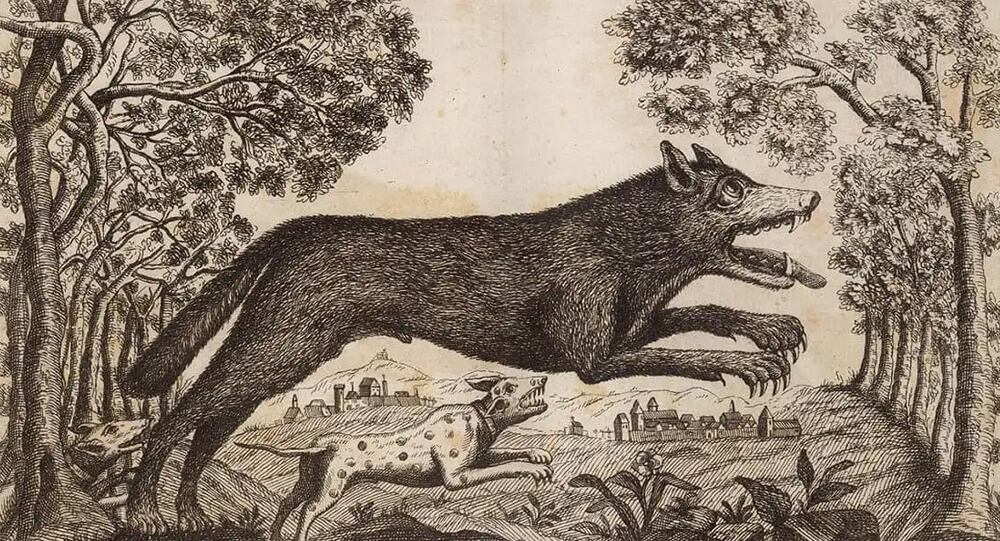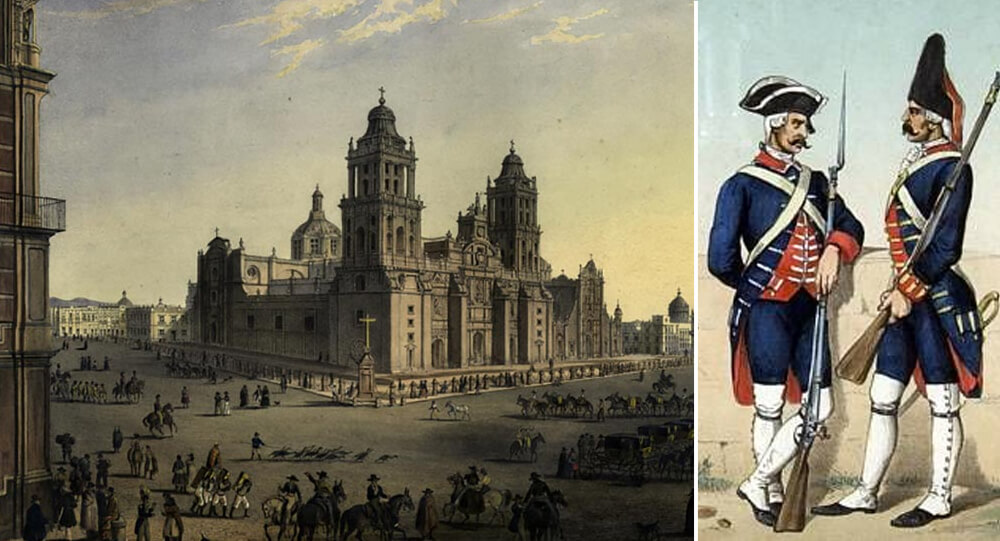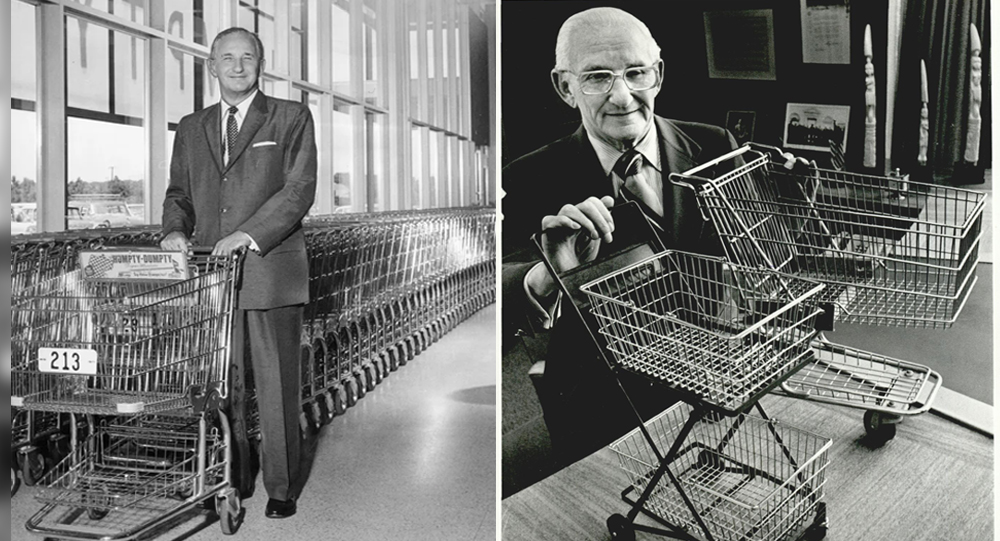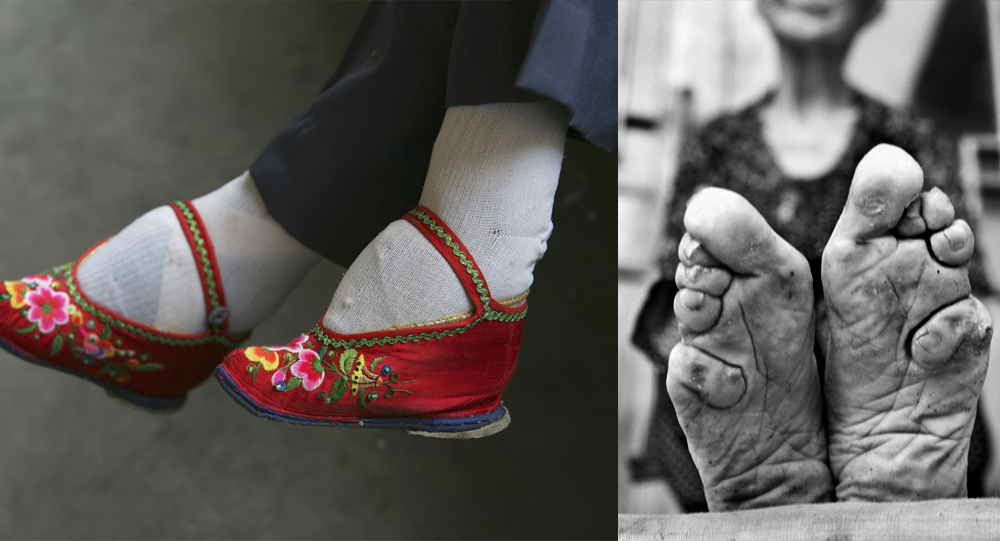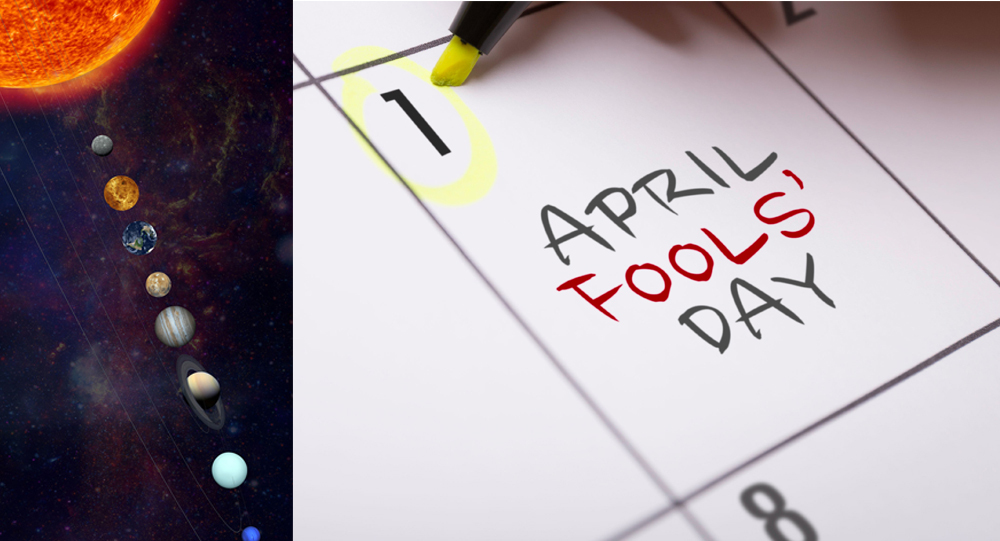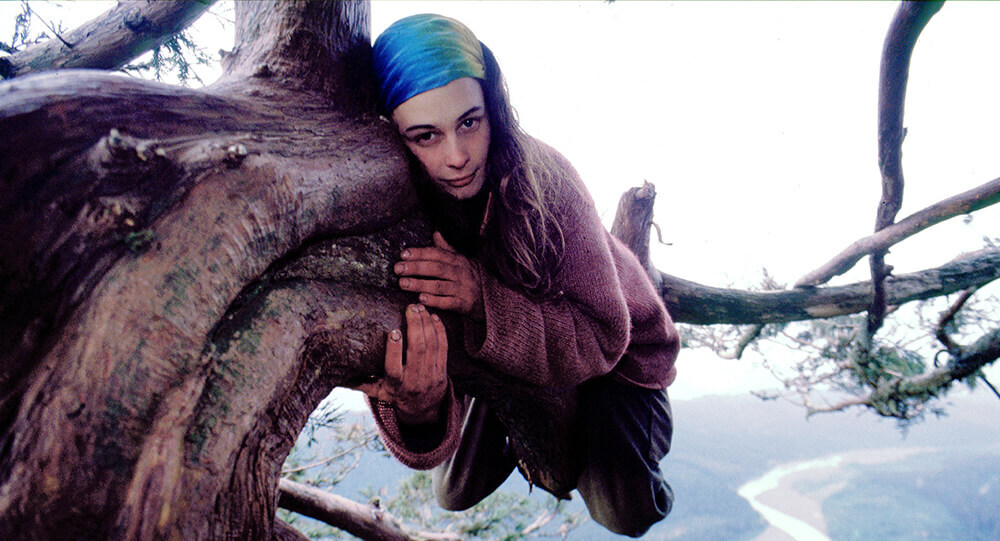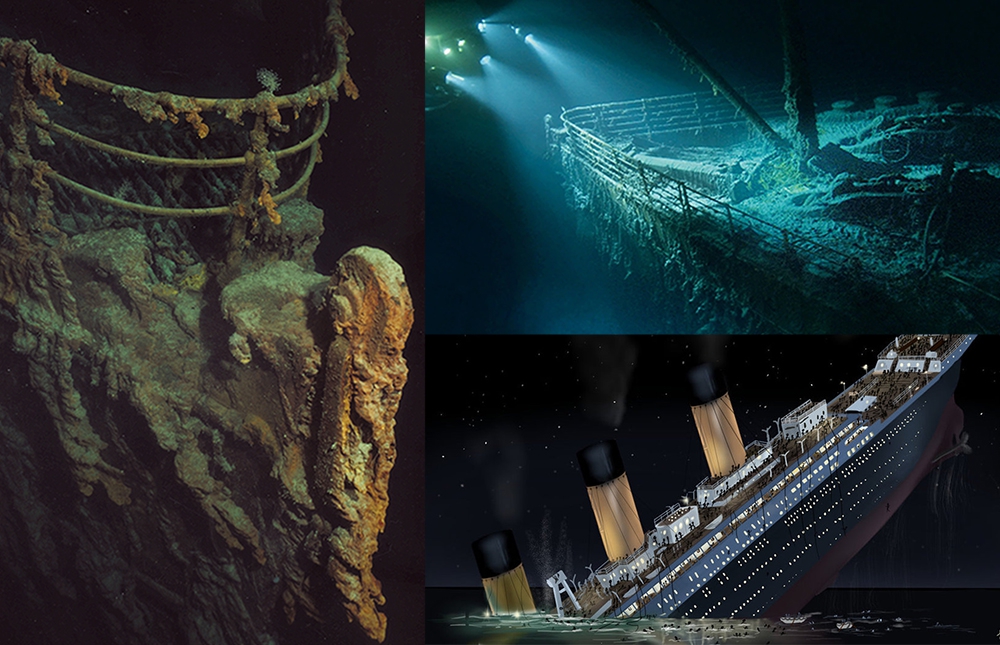
If you ask your friends what’s the most famous ship in history the answer in most cases will be the same, of course, the legendary Titanic. Its history is full of mysteries, at first it was a source of hope and national pride as well as proof of the triumphs of mankind but it soon became a source of nostalgia and pain, the extent of which cannot be described in words. The day the Titanic sank underwater will forever remain one of the most painful days in human history. Although more than a hundred years have passed since the tragic event, no one has forgotten about it and people are still interested in the transatlantic liner.
1. Everyone On The Ship Could Have Been Saved If The Ship SS Californian (The Closest Ship Passed By) Give Importance And Respond To The Titanic’s Help

On April 14th, 1912 at 11:40 p.m. the Titanic hit an iceberg receiving fatal damage. A couple of hours later at 2:20 a.m., the ship split in two and within minutes sank completely. During all that time, the ship sent out distress signals that did not go unnoticed. The ocean liner RMS Carpathia rushed to the site of the wreck at full speed but unfortunately arrived an hour and a half later. All the crew of the Carpathia could do was to pick up the 710 survivors of the shipwreck but the story could have been very different. Only after some time it became known that the ocean liner RMS Carpathia was not the closest ship to the Titanic. Around 12:45 a.m. on that terrible night, the officers of the Titanic noticed the lights of another ship in the distance. it was the SS Californian but the ship did not respond to the calls for help.
The captain of the Titanic tried desperately to get his colleague’s attention by firing white flares. It may seem surprising but the watch officers of the SS Californian saw every single one of them, the crew immediately woke the captain but unfortunately he did not give it any importance. The only radio operator who could receive the distress call was asleep at the time. The SS Californian decided that the flares were just a signal from an unknown ship that had stopped on the ice. So the passenger ship which was very close simply passed by. Today experts agree that the SS Californian could have saved many or perhaps all of the lives that were lost that night and that are over 1500 people.
2. The Victims Remain Unknown Because Some Passengers Are Under False Names

Of course, every global tragedy is followed by a large number of complex and very thorough investigations. If you look at the official figures, it turns out there were 1514 victims of the shipwreck but the truth is much more complicated. The exact number of victims is actually not known. It could be 1,490 or 1635. Moreover, the investigations weren’t very useful so far, no one knows the names of all the people who died on the Titanic. When the bodies were recovered from the bottom of the ocean, it was discovered that any passengers were traveling under false names. Also, there were too many people all from different places and the lists of survivors were made amidst the panic of the catastrophe, not surprisingly it was impossible to identify each person. you can visit the fair few cemeteries in the city of Halifax Nova Scotia Canada where more than 100 victims of the Titanic are buried and there about 30 of them still don’t have names. Surprisingly investigations are still ongoing in 2008 for example one of these graves finally got a name. Extensive DNA testing and a worldwide genealogical search helped identify the body of a 19-month-old baby. The unnamed body of 96 years later has recovered its name “Sydney Leslie Goodwin”.
3. Not Enough Lifeboats And The Official Reason Is That They Would Have Taken Up Too Much Space On The Deck And Blocking The Passages And Covering Up The Beautiful View Of The Ocean.

When designing a transport vehicle great attention is paid to the safety of the passengers. Engineers and designers do everything possible to ensure that as many people as possible can be saved in the event of an accident, but in the case of the Titanic, something went wrong, very wrong. When it was launched, the Titanic was the largest ship in the world; it could hold a total of 3,547 people. That’s an incredible number! Fortunately, when the Titanic made its first voyage, there were fewer people on board. According to official data, there were 2,224 registered passengers and now for the most interesting part, the original plan was for the Titanic to carry 48 lifeboats. However, the owners of the liner insisted that their number be reduced to 20. The capacity of each lifeboat was about 60 people. A simple mathematical calculation allows us to discover that only 1200 people, could have been saved only a little more than half of the passengers. Why weren’t more lifeboats installed? The official reason is that they would have taken up too much space on the deck. Blocking the passages and covering up the beautiful view of the ocean. So appearance and comfort were placed above the safety of people. to be fair, the ship was considered unsinkable, no one expected it to sink so easily. Everyone thought that even with the damage, the Titanic could stay afloat for a long time. In other words, the immediate and simultaneous evacuation of all passengers was not considered a possible situation.
4. The Drill Was Canceled

There is a thing known as a lifeboat drill. During a drill, the crew perfects the skills of preparation of the boats. their launching and control in addition passengers are prepared for possible evacuation. They learn to evacuate while remaining calm and in case of emergency they understand better how to behave and don’t fall victim to panic.
ideally, these exercises should take place once a week. The Titanic sailed on April 14th so it’s not surprising that the drill was scheduled for April 10th but for some mysterious reason it was canceled. To this day, no one knows why Captain Smith chose not to conduct the drill, perhaps he was too confident, or perhaps he thought that since there were only three days left to travel it wasn’t necessary. Either way, the decision cost a lot of people their lives. The passengers as well as the crew were not prepared for an emergency evacuation. That’s why some boats designed for 60 people in some cases were launched only half-full.
5. Musicians Played Until The End.

Although the Titanic boasted an amazing size and capacity, it also stood out for its interior decoration, luxuriously furnished, living rooms reading and smoking halls, and gymnasium. All this was at the service of the first-class passengers. The crew included a large number of cooks, waiters, Baker’s, and of course musicians, eight people to be exact. here’s a quote from a second-class passenger who was lucky enough to escape from the Titanic. “Many brave things were done that night but none were braver than those done by men playing minute after minute as the ship settled quietly lower and lower in the sea”. Despite the fear trouble and panic, despite knowing that their lives were about to come to an end, these brave men held their instruments in their hands and continued to play until the end until the last second. They knew that music calmed people made the tragedy less terrible and therefore they could not stop. None of the eight musicians survived and only three bodies were found. The youngest of them was 21 years old.
6. Tragedy Could Have Been Avoided If They Only Had Access To The Room Where The Binoculars Were Kept
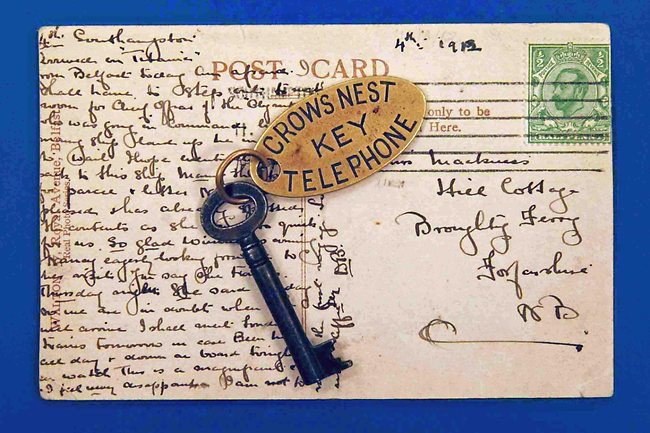
David Blair is a very lucky man, he was supposed to be the second officer on the Titanic but at the last second, he was pulled out. This incident saved his life which should have made him incredibly happy but something clouded his joy because maybe he was the only person who could have saved the Titanic. How? A hundred years ago ships were not equipped with smart advanced technology like they are today. To see a threat on the horizon, people had to keep an eye out and binoculars were of great help but here’s the problem. The crew of the Titanic had no access to the room where the binoculars were kept because David Blair was responsible for the keys. He left the ship in a hurry and he simply forgot to return the key he left it in his pocket. if the crew had had access to the binoculars they would have noticed the iceberg in advance. The ship would have had time to change course. Hundreds of people would have remained alive but the Titanic seemed to attract bad luck. A series of coincidences and mistakes led to disaster, a fate from which it could not escape.
7. There Is A Stewardess Known As Miss Unsinkable.

In the late 19th and early 20th centuries, White Star Line was considered the largest shipping company in the world. In 1907, its owners decided to build three huge ocean liners as you may have guessed; the Titanic was one of them. The other ships were the “Olympic” and “the gigantic” later named “Britannic”. No matter how huge and luxurious these incredible ships were all their stories ended in tragedy. These three are rightly considered the most famous ships in history. There are many books and films telling their story but there is something they all have in common or to be precise, someone, Violet Constance Jessup born in Argentina. This unremarkable stewardess is known as Miss unsinkable. On September 20th, 1911 the ship Olympic crashed with the cruiser Hawk, fortunately, left no victims. Violet was on board the ocean liner at the time. When the Titanic hit an iceberg she was also on board. Luckily she was able to get to a lifeboat and finally during World War one, violet served as a nurse with the British Red Cross. she was sent to board the Britannic which was then a hospital ship. On November 21st, 1916, the huge ship, was blown up by a mine but violet survived the accident. Now, do you understand why she is Miss unsinkable? By the way, the woman originally did not want to work for White Star Line but her friends convinced her to work on the Titanic, assuring her that it would be a great recommendation in the future.
We don’t know whether to call violet Constance Jessup lucky or not. Let’s just say that this series of incidents is somewhat mysterious and curious.
8. The Engineers’ Sacrifice.

We have already talked about a large number of crew members onboard the Titanic; now let’s focus on this fact and at the same time pay tribute to the people who did everything possible to save others. About 900 crew members worked on the Titanic, less than a third survived. Among the victims were all the engineers that are because they simply didn’t have time to save their lives. 25 engineers, 6 electrical engineers, two Boilermakers, a plumber, and a clerk, while there were panic and fear on the deck, they stayed down in the boiler rooms. they needed to keep them running so that there would be electricity and the pumps would continue to pump the water. They were fighting against death. For every inch, of the ship, the engineers didn’t want to give up and most of them probably didn’t know that they were only delaying the disaster and that it was not possible to prevent it yet these people remain an example of courage, bravery, and devotion. In the city of Southampton on the south coast of Britain, there is a memorial in their Honour.

What Was the Beast of Gévaudan?
Between 1764 and 1767, a mysterious animal called the Beast of Gévaudan terrorized the French village called Gévaudan. It attacked and killed about 100 adults and children. While most believe it was a wolf, some say it may have been a wolf-dog hybrid, hyena or even a lion, but without any genetic evidence, the beast will remain a mystery forever.

Did Gil Pérez Really Teleport from Manila to Mexico Overnight? The 1593 Mystery
On October 24, 1593, while performing his guard duties at Manila's Governor's Palace in the Philippines, Gil Perez stopped to lean against a wall and sleep for a while. He opened his eyes to find himself in an unusual environment. Gil was in the Plaza Mayor in Mexico City. They imprisoned Perez, but the authorities in Mexico City decided to release him and return him home.

Sylvan Goldman: The Visionary Who Revolutionized Shopping with the Cart
The inventor of shopping carts, Sylvan Goldman, had to hire several male and female models to push carts around in his store, demonstrate their utility, and explain their use to other customers, due to not catching on initially.

The true story of Annie Oakley, legendary sharpshooter
Anne Oakley was such a good shooter that she could split a playing card help edge-on, hit dimes thrown into the air, shoot cigarette from her husband's lips, and pierce a playing card thrown into the air before it hit the ground.

Inside China’s Footbinding Tradition: The Painful Ritual of Lotus Shoes and Bound Feet
In China, Lotus shoes were used to bind women's feet to keep their feet small

The 1976 April Fools' Pranks, Planetary Alignment
On April fool's Day, 1976, the BBC convinced many listeners that a special alignment of the planets would temporarily decrease gravity on Earth. Phone lines were flooded with callers who claimed they felt the effects.

The incredible story of Julia "Butterfly" Hill and her legacy
American environmental activist Julia “Butterfly” Hill lived in a 1500-year-old California Redwood tree for 738 days to prevent it from being cut down by the Pacific Lumber Company. The Simpson’s episode “Lisa the Tree Hugger” was inspired by Hill’s story.

Moondyne Joe: The story of Australia's most notorious prison escapee
A man named Joseph Bolitho Johns (A.K.A Moondyne Joe) broke out of Australian prisons so many times that the police were compelled to build a special cell just for him. He escaped from that as well.

Xin Zhui And The Story Of The Stunningly Intact Lady Dai Mummy
A 2,000-year-old mummy of a Chinese woman, Xin Zhui, also known as “Lady Dai,” was preserved in 21 gallons of an “unknown liquid.” With her original hair, organs, eyebrows, and eyelashes intact, the mummy still has blood in her veins. Her skin and ligaments are soft and as flexible as that of a living person.

Top 10 most cruel medical procedures that are being used today
We are all aware that medicine has advanced dramatically over the last fifty years. There are several modern medical approaches available today, but this was not always the case. However, the past of medicine is a dark one. Medical leeches, lobotomy, vascular surgery, cranial stenosis, and even electroshock therapy are all options. These are only a couple of the cruel healing techniques that are still in use today.

How Cleveland's Balloonfest in 1986 Turned Into a Public Tragedy
In Cleveland, Ohio, United Way broke the world record by deflating nearly 1.5 million balloons as part of a publicity stunt to raise money. The balloon obstructed a US Coast Guard search for two boaters who were subsequently discovered to have drowned, blocked airport runways, and blocked land and waterways.

The World’s First Seismograph: How Ancient China Detected Earthquakes 1,800 Years Ago
Over 1,800 years ago, long before modern technology, the ancient Chinese astronomer and inventor Zhang Heng created the world’s first seismograph in 132 AD. This ingenious bronze device could detect distant earthquakes by releasing small balls from dragons’ mouths into toads’ mouths—each indicating a different compass direction. Its historic detection of an earthquake 400 miles away astonished the imperial court and transformed the way societies understood and responded to seismic events.

Louis Le Prince Invented the motion picture camera, and then he mysteriously disappeared
Louis Le Prince, the inventor of motion pictures, vanished without a trace in 1890. Thomas Edison quickly claimed the title of "first and sole inventor of cinema," even taking Le Prince's son to court to dispute it. A few years later, the son also dies under mysterious circumstances.

Why Comedians Failed to Make Sober Sue Laugh in the Early 1900s
In the bustling vaudeville scene of early 20th century New York, a mysterious performer known as "Sober Sue" captured public imagination not for jokes or songs, but for her unshakable stoicism—she never smiled or laughed. A local theater even offered a tempting reward of $1,000 to anyone who could make her laugh, drawing crowds and famous comedians eager to claim the prize. Despite countless hilarious attempts, Sue remained expressionless, a mystery that baffled performers and audiences until it was revealed that she suffered from facial paralysis, explaining her unchanging demeanor.

Why the Brooklyn Bridge Was Once Crossed by 17 Camels and 21 Elephants
On May 30, 1883, a rumor that the Brooklyn Bridge was going to collapse caused a stampede, which killed at least at twleve people. To prove the bridge was safe, P.T. Barnum led a parade of 21 elephants over it.

The true story Of The Radium Girls that change US labor laws
Hundreds of young women worked in clock factories during World War I, painting watch dials with luminous radium paint. The company lied about the risk of radiation, claiming there was no danger, which resulted in the death of the young women.

1972 Andes Plane Crash Survivor recall the terrifying Struggles to Stay Alive
On October 13, 1972, a plane carrying a rugby team from Uruguay crashed in the Andes between Chile and Argentina. The survivors were in brutal conditions - high altitude, bitter cold, and the lack of food—and faced the most terrible choice—eating the frozen flesh of their dead friends or starving to death themselves.

Reason Behind The Suicide Of Christine Chubbuck Live On Air
Actor Rebecca Hall had serious reservations about tackling the macabre story around why Chubbuck killed herself in 1974. So what changed her mind?

How Greek prime minister in 1830’s tried to spread the potato in Greece
A Greek prime minister in 1830’s tried to spread the potato in Greece but people weren’t interested so he put armed guards in front of shipments of potatoes so people would think they were important. People later started stealing these potatoes a lot which spread the crop to all of Greece.

Hedy Lamarr, A Hollywood actress who also a mathematician and inventor
Hollywood actress Hedy Lamarr was also a mathematician and the inventor of frequency hopping spread spectrum, a technology still used for bluetooth and wifi

The Day an Israeli F-15 Landed with One Wing: Zivi Nedivi’s Unbelievable Mid-Air Survival
Discover the astonishing true story of Israeli pilot Zivi Nedivi, who safely landed an F-15 after a mid-air collision tore off its entire right wing. Learn how skill, quick thinking, and the F-15’s unique design turned a disaster into a legendary feat in aviation history

Marion Stokes recorded 30 years of television
Marion Stokes, a Philadelphia woman began taping whatever was on television in 1979 and didn’t stop until her death in 2012. The 71,000 VHS and Betamax tapes she made are the most complete collection preserving this era of TV. They are being digitized by the Internet Archive.

Atomic Tourism: In the 1950s, nuclear tests in Las Vegas served as a draw for tourists
Between 1950 and 1960, Las Vegas offered “Atomic Tourism” in which guests could watch atomic bombs being tested in the desert as a form of entertainment.

William James Sidis: The smartest person yet forgotten by people
William James Sidis, who was only 11 years old when he enrolled in Hardvard, finished his primary and secondary schooling in less than a year. He knew eight foreign languages by the age of eight and even invented his own language, "vedergood."

Iranian inmate dies from happiness after finding out he will not be executed
An Iranian man who was convicted of murder reportedly died from happiness after learning that his death sentence was being commuted.

